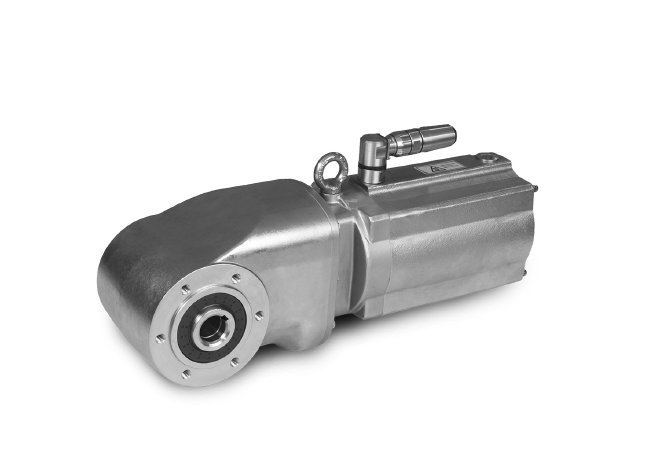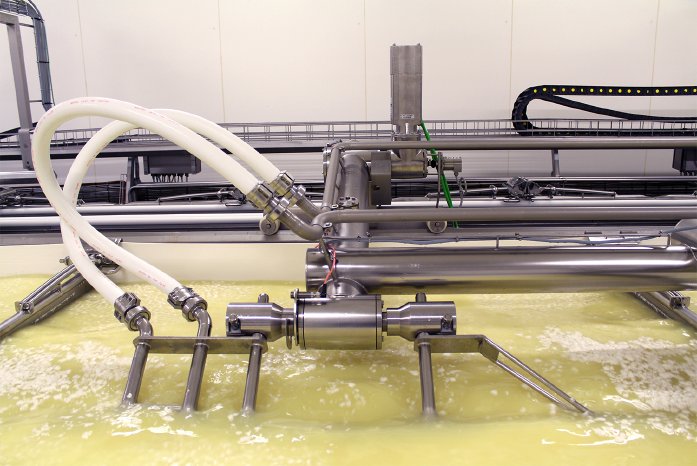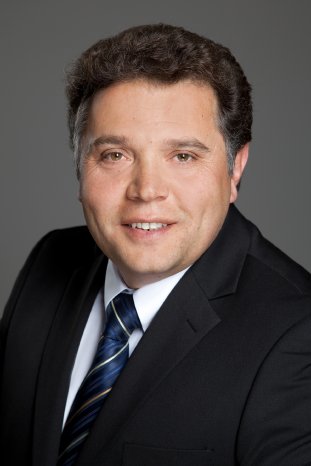Yasar Yüce, Product Manager at Bauer Gear Motor, a brand of Altra Industrial Motion Corporation, explains the growing popularity of stainless steel geared motors in the food & beverage industry.
The Hazard Analysis and Critical Control Point (HACCP) system is an internationally recognized method for reducing risk factors in the production or processing of food. As a process for on-going improvement, it requires manufacturers to continuously evaluate each process in its production line to identify possible hazards and minimize risk at critical points. The primary purpose of the system is to protect people from food-borne illness, though it is also recognized as a 'best practice' approach to improve quality and consistency in the final product.
Understanding the process of analyzing risk in the production line and making improvements helps to explain the evolution in geared motor technology that is favored by the industry. Looking to the past, geared motors were always recognized as a favorable drive system as they are efficient and reliable. However, as regulations surrounding hygiene became tighter, it was soon necessary to source specialist solutions for the food & beverage industry.
Aseptic drives were developed for applications where washdowns are required to maintain a clean environment. Drives are typically painted using acid- and alkali-resistant coatings, which can withstand chemicals with a pH range of 2 - 12. As a result, they can withstand the cleansing solutions and disinfectants that are commonly used within the food industry without affecting their performance .
Aseptic drive solutions therefore deliver all the performance benefits of a standard geared motor, while eliminating some of the hygiene risks. However, with a HACCP system in place, a further risk assessment may identify that the coatings on aseptic drives are prone to damage. This would expose the motor's surface to corrosive chemicals and risk the food product being contaminated with paint fragments even when the coating is FDA approved. Therefore, many in the industry are now specifying stainless steel solutions.
Stainless steel geared motors meet all of the regulations set out by organizations such as the FDA and NSF without the need for specialist coatings. As a base material, stainless steel is inherently resistant to corrosion and chemicals, ensuring that repeated washdowns do not adversely affect the reliability or hygienic qualities of the geared motor. Further, when stainless steel is scratched, it does not compromise the corrosion or contamination resistance of the geared motor.
Stainless steel geared motors - such as the HiflexDRIVE from Bauer Gear Motor - are designed so that a fan and cooling ribs are not required, thereby allowing for a completely smooth outer casing with a non-drive end which is sealed. This allows the motor to be offered with up to IP69k rating - which protects against high-pressured washers and steam cleaning. The elimination of venting elements creates a smooth outer surface, which provides a higher cleanability of the motor casing and prevents re-infection of the local environment caused by air movement from a cooling fan.
The HiflexDRIVE range is available in three sizes ranging from 80 Nm to 330 Nm in standard, aseptic and stainless steel designs with power ratings up to 6.3 kW depending on the size selected. A two-stage gearbox design allows ratios of up to 109: 1, depending on gear type, and allows a wide range of applications to be covered.
Performance and efficiency gains are also attained with the inclusion of IE4 (IE5 ready) permanent magnet synchronous motor (PMSM) technology. PMSMs offer considerably improved efficiency when compared to induction motors, with up to 30% energy saving. The benefit is particularly apparent under partial load conditions, the technology having the added benefit of maintaining constant speed, independent of the load. This means that the motor speed does not vary - despite load variations or cases of voltage drop - as long as the mains frequency is kept constant.
Stainless steel advantage for Rücker
For Rücker GmbH, one of Europe's leading dairy producers, reducing HACCP risk factors is a key approach for all developments along its production lines. Using this system, it has progressed from standard geared motor technology, through aseptic solutions and now has the newest evolution stage of stainless steel. At each stage of development, the new solutions offered distinct benefits to the incumbent technology: improving efficiency, reducing maintenance and reducing risk.
A 60-meter-long coagulator, used for cheese curd processing, features several stirrers that keep the milk moving as the whey is removed from the curd. Each stirrer moves along a section of the lane; once it reaches the end of its section, the stirrer is lifted out of the curd and moves back to the starting position.
Rücker first approached Bauer when its engineers identified that integrating the brakes into the housing of the geared motor would increase cleanability in the system and therefore reduce risk. Shortly after, Rücker began upgrading its geared motors to aseptic drives to take advantage of the improved hygiene ratings. Now the first of the aseptic drives have been replaced with stainless steel units from Bauer. The stainless steel drives still offer the same integrated brake feature from the original unit, but now with the added hygiene performance and mechanical resilience of a stainless steel housing.
Mr Krause, Head of Maintenance at Rücker, explains:“We follow a philosophy of continuous improvement for all of our production processes. Each update in geared motor technology has represented a real-world improvement, but we are always looking further ahead for what we can do next.
“We already had very positive experiences with Bauer's products and were aware of their quality. When it came to specifying a further upgrade to stainless steel, it was not surprising that the only supplier that offered a stainless option with built-in brakes was Bauer. "
Image Captions:
Image 1: Stainless steel geared motors meet all of the regulations set out by organizations such as the FDA and NSF without the need for specialist coatings.
Image 2: A 60-meter-long coagulator, used for cheese curd processing, features several stirrers that keep the milk moving as the whey is removed from the curd.
(Image Source: Rücker GmbH, Germany)
Image 3: Yasar Yüce, Product Manager at Bauer Gear Motor GmbH.




